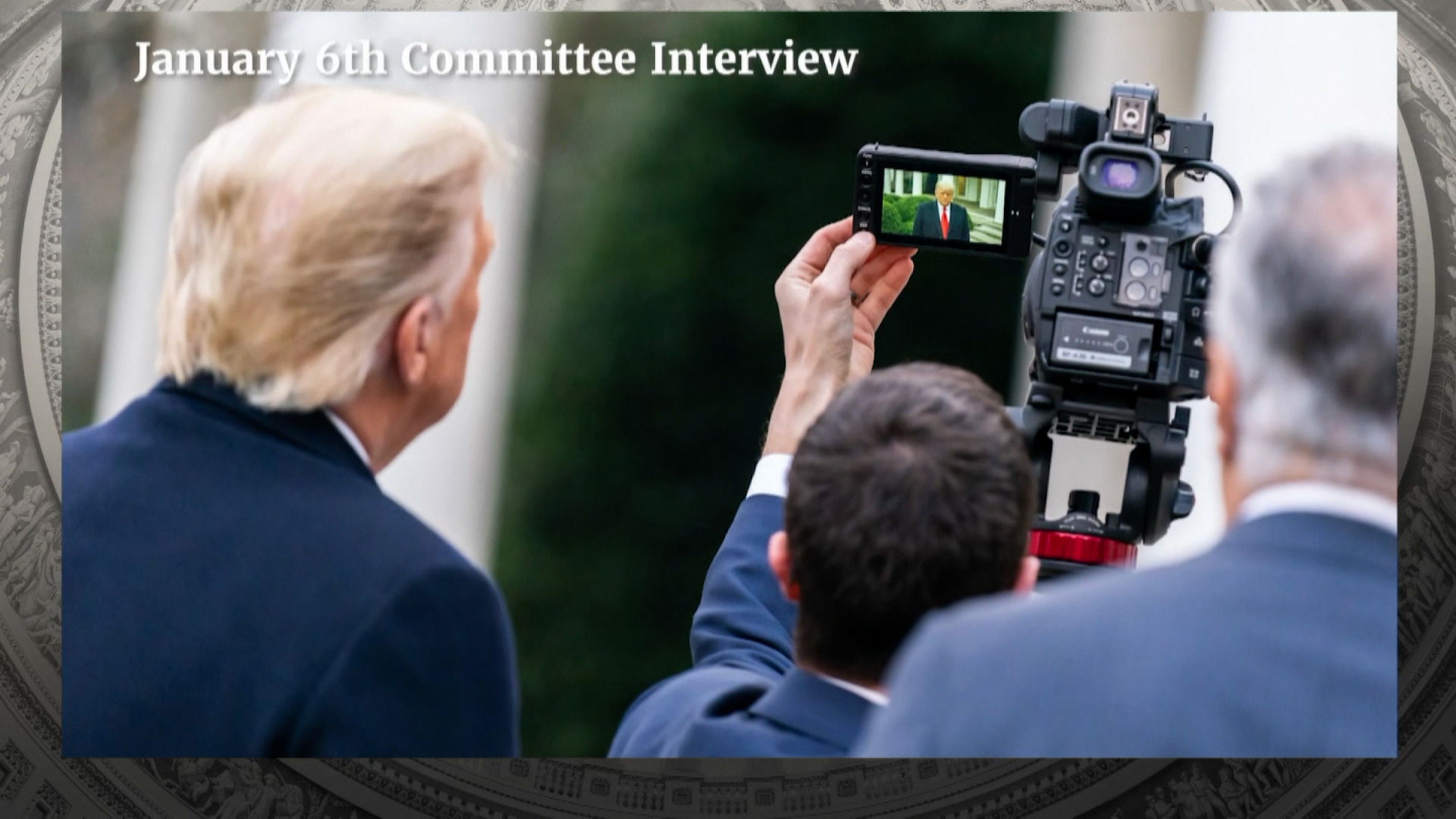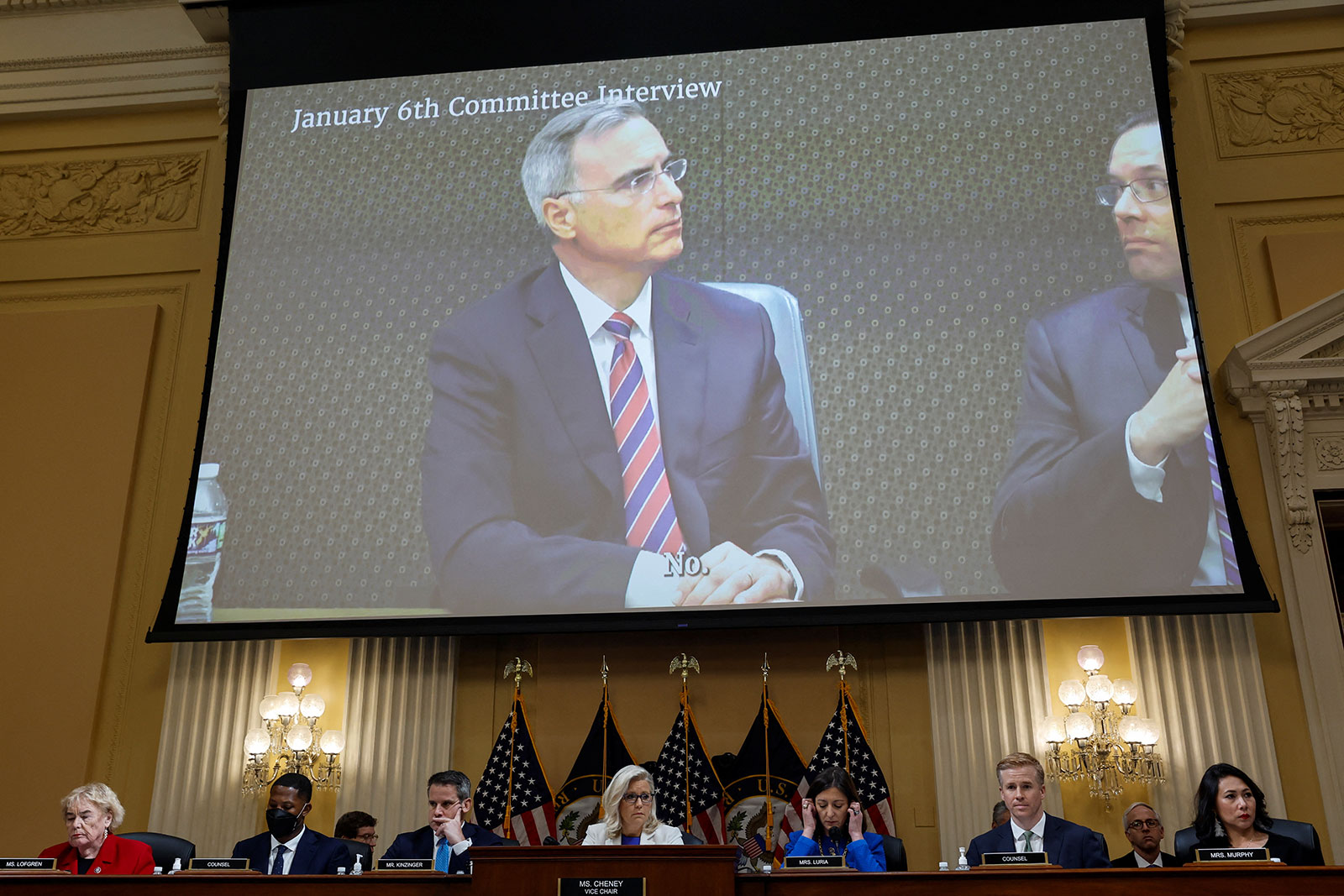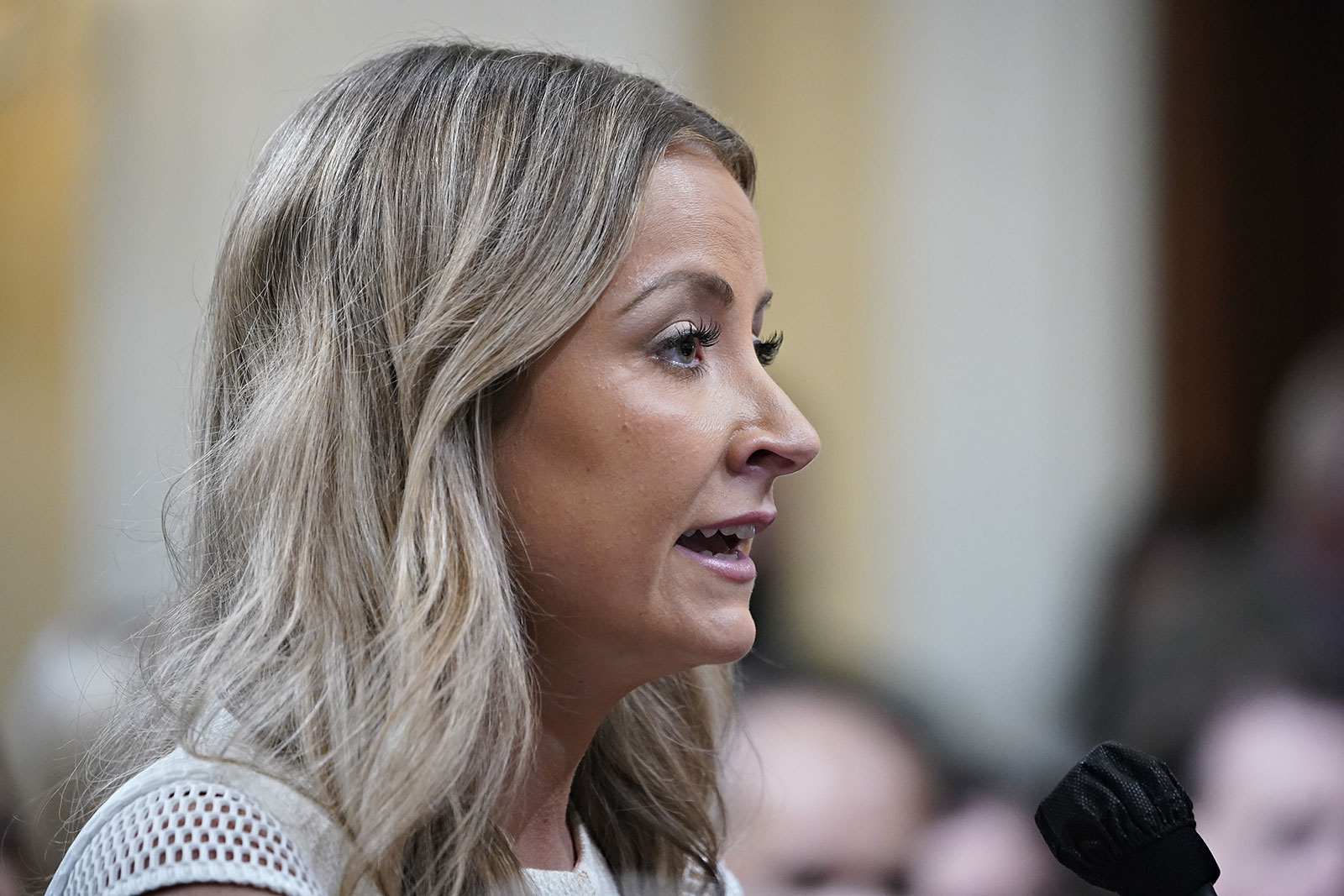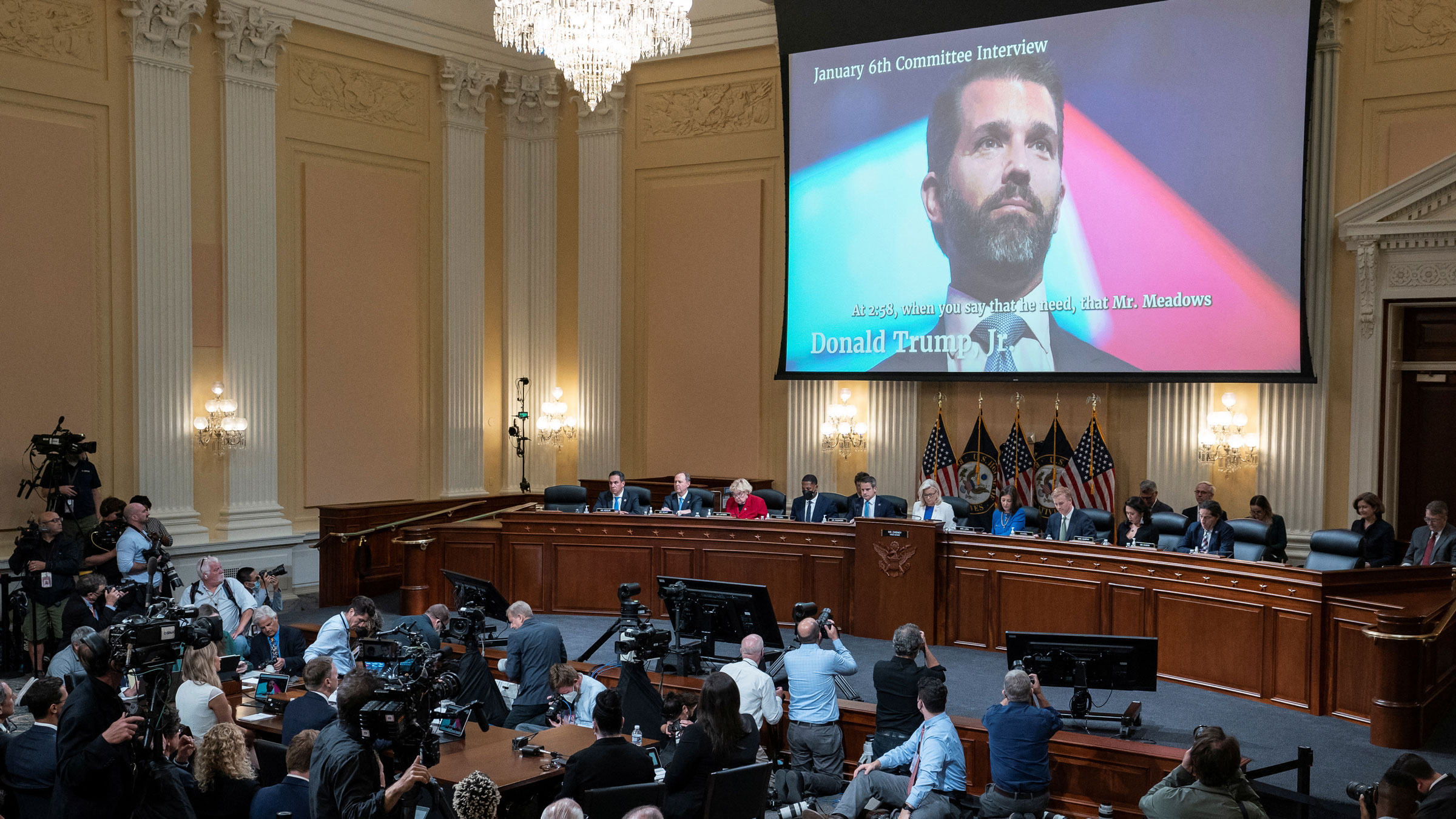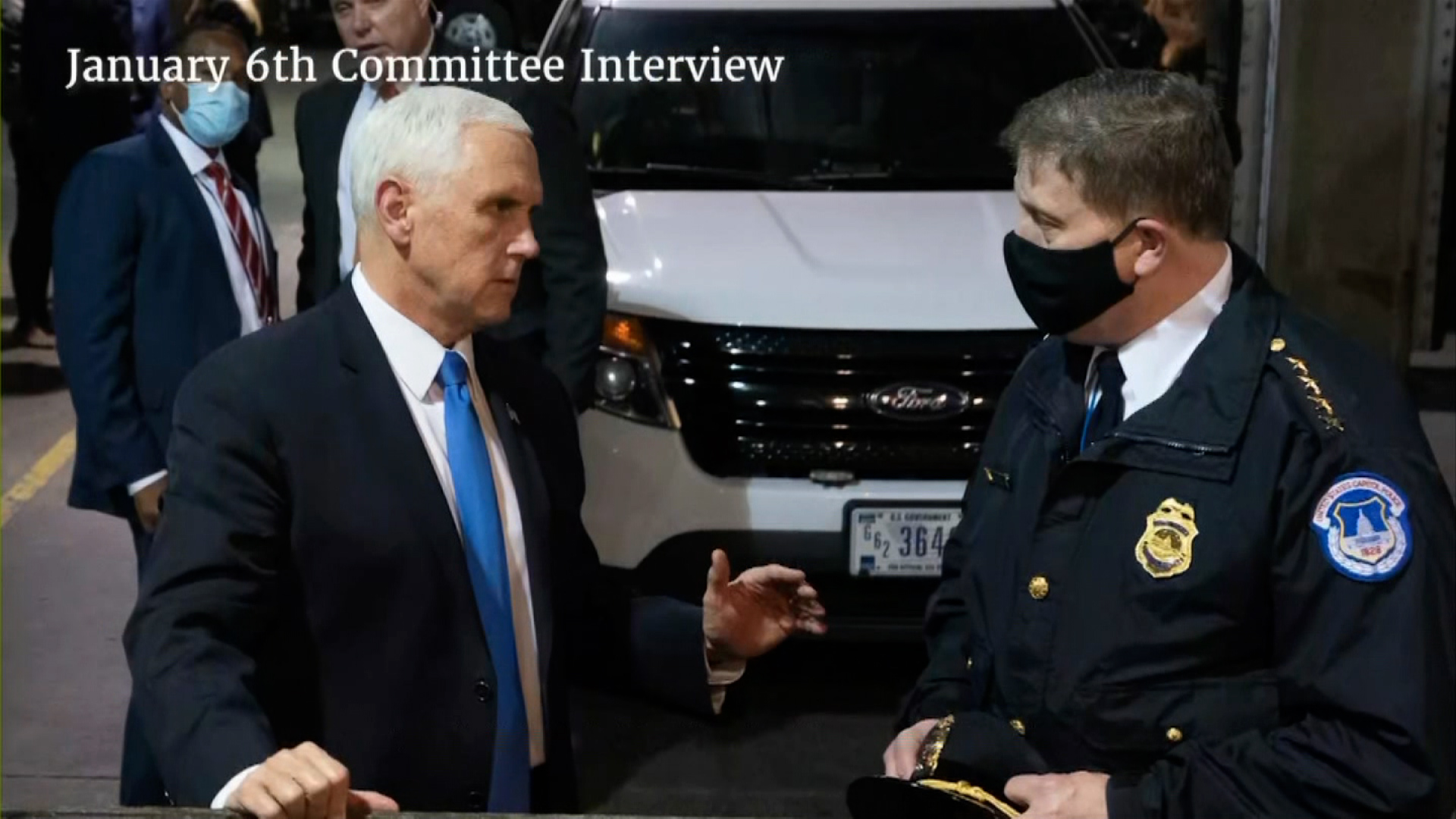
The House Select Committee during Thursday’s hearing revealed a never-before-seen script for then-President Trump's video message to rioters on January 6, showing that staff intended for Trump to claim that the vast majority if his supporters who had stormed the US Capitol were acting "peacefully."
In the script, made public for the first time during Thursday's select committee hearing, Trump was supposed to say: "I urge all my supporters to do exactly as 99.9% of them have already been doing – express their passions and opinions peacefully. My supporters have a right to have their voices heard but make no mistake – NO ONE should be using violence or threats of violence to express themselves. Especially at the U.S. Capitol. Let's respect our institutions. Let's do all better. I am asking you to leave the Capitol Hill region NOW and go home in a peaceful way.“
The prepared script – an official White House document – was stamped with “THE PRESIDENT HAS SEEN,” according to the images displayed Thursday by the committee.
However, the video that Trump eventually posted on Twitter deviated significantly from this script. There was no direct condemnation of the violence, but he did say “we don’t want anybody hurt.” He didn’t make the “99.9%” claim in the final video, but he did heap praise on the rioters, saying “we love you” and “you’re very special.” And Trump falsely claimed that he won the 2020 election, even though that was not in the prepared remarks.
Trump filmed the video in the White House Rose Garden as White House attorney Eric Herschmann and Trump’s body man Nick Luna watched. Both testified that the former President did not stick to a script that they had provided him – choosing instead to speak "off the cuff," according to testimony from Luna.
"Ultimately, these (prepared) remarks... were not the remarks that the President delivered in the Rose Garden," Luna testified, referring to the video Trump eventually sent out telling his supporters, "We love you."
Correction: An earlier version incorrectly said the committee played video of Trump reading his remarks. The committee only displayed the draft of his prepared remarks.
